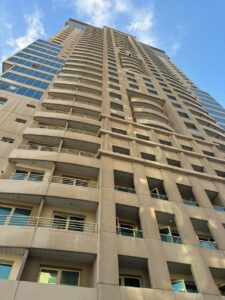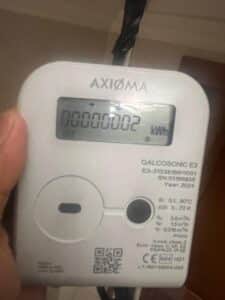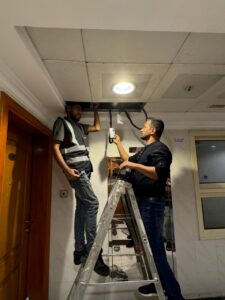How Advanced Submetering Enabled Continuous Energy Monitoring and Data-Driven Maintenance at Manchester Tower, Dubai
Mainlink and Axioma Metering’s solution was implemented in a 336-unit high-rise in Dubai for wireless energy metering.

Location: Dubai Marina, United Arab Emirates
Property Type: 36-story multifamily residential building with commercial space on ground-floor (built 2007, 336 units)
Stakeholders: Stratum Owners Association Management (client), unit owners & residents
Technology Partners: Mainlink Middle East Energy Services (full project management and implementation), Axioma Metering (wireless BTU meters), dual wireless LoRa communication, data management platform, mobile app)
Smart energy monitoring is at the core of the UAE’s Vision 2030 for sustainability. Yet, many buildings in Dubai still operate without detailed usage data, especially when it comes to cooling systems, which account for major partn of total energy consumption. Without insight, inefficiency thrives and energy costs soar.
That was the case for Manchester Tower, a prominent residential high-rise in Dubai Marina. Until recently, the building had no way to measure how much cooling energy was created, how much each unit consumed, or how much energy was lost. This resulted in shared billing, no accountability, and no way to track or optimize cooling energy performance.
By installing a BTU metering system with wireless connectivity and real-time data monitoring through a data management platform, Manchester Tower transformed its blind spots into actionable insights – cutting energy loss, increasing efficiency, improving transparency, and extending the asset life of critical HVAC infrastructure.
The Challenge
Manchester Tower relies on a centralized chiller system to cool all 336 units via a single energy source (chiller plant). However, without individual metering, there was no way to determine how much energy each resident consumed.
- No transparency for all involved parties
- High, unpredictable energy bills
- Wasted energy due to the absence of any usage monitoring
- Limited insight into system efficiency or equipment health
- Risk of non-compliance with regulations
- Shorter asset life due to unmanaged cooling system strain
- Without individual billing, residents had no incentive to conserve energy, resulting in inefficient usage and higher overall consumption
The Solution
The retrofit began with a detailed inspection, followed by an in-depth study to design a feasible solution. Once the design of the wireless BTU metering system was finalized, the complete installation was completed within 45 days, with each meter taking approximately 30 to 45 minutes to install.
Component | Quantity | Purpose |
BTU Meters (Qalcosonic E3 wireless meters with dual communication – (LoRa, W M-Bus by Axioma Metering) | 448 | Tracks energy consumption and all related factors: Supply and return temperature, Delta T, Chilled water flow, etc. |
Temperature Sensors | 2 per meter | Measures supply and return water temperatures for accurate energy calculation |
Mainlink LoRa Gateways | 5 | Establish scalable wireless network across the building |
Mainhive Platform | 1 | Centralized meter data management system for real-time analytics, diagnostics, and maintenance |
Residential Mobile App | Unlimited | Enables residents to track their energy usage and manage consumption behavior |
Executive Snapshot
- 448 BTU meters installed/retrofitted
- 5 wireless gateways installed in central corridors
- 45-day total implementation time, including design, installation, testing, commissioning, and integration with the remote reading data management platform
- 100% units are monitored for energy efficiency
- 20% estimated reduction in cooling energy use due to monitoring and behavior change
Benefits for Stakeholders:
- Property Managers: Gain full visibility into energy use, reduce maintenance costs, and extend HVAC system life with real-time monitoring and alerts.
- Residents: Enjoy transparent billing, mobile access to usage data, and more control over energy costs—leading to fewer disputes and more savings.
- Subcontractors: Respond faster and work smarter with real-time diagnostics and clear accountability for maintenance and repairs.


